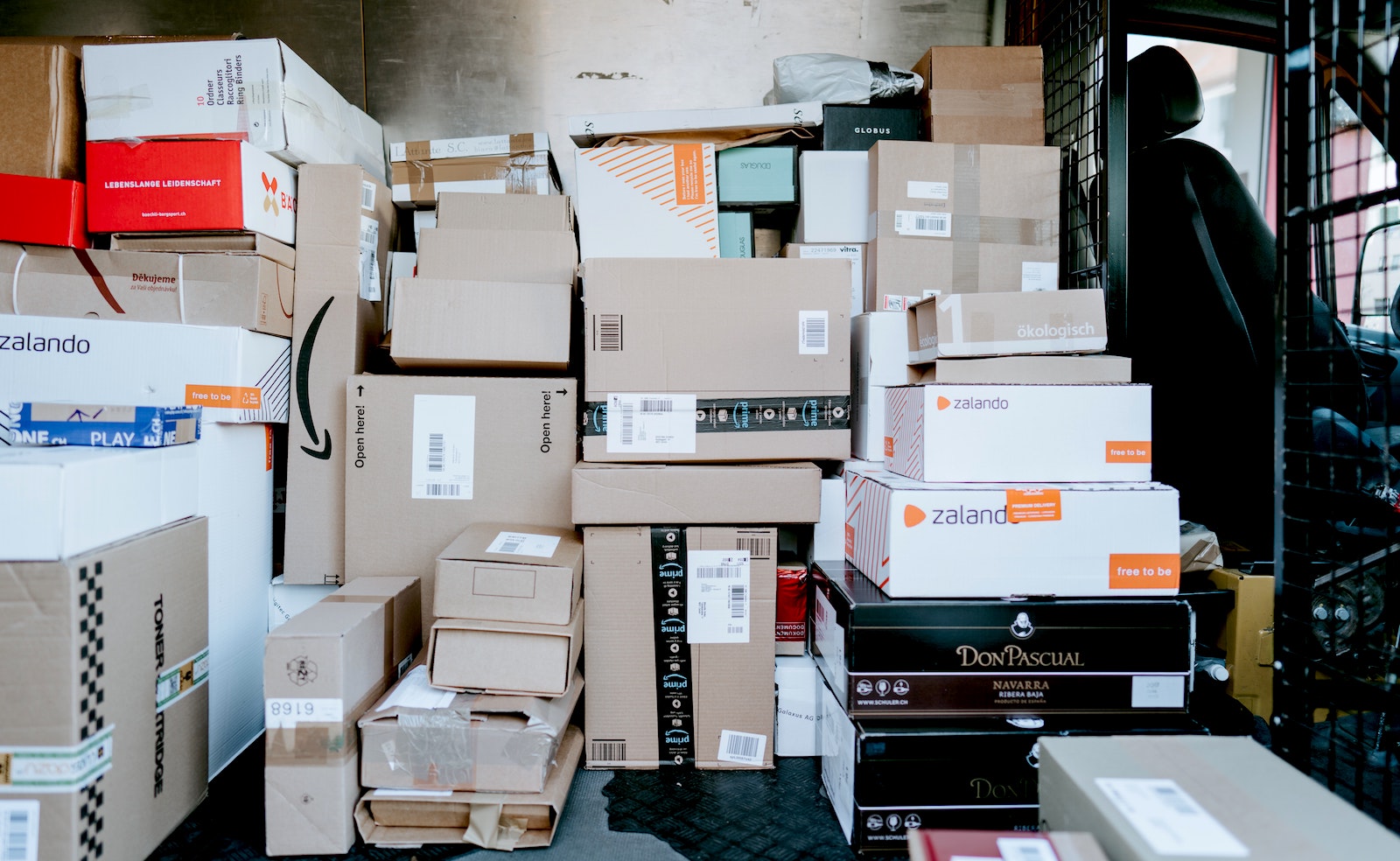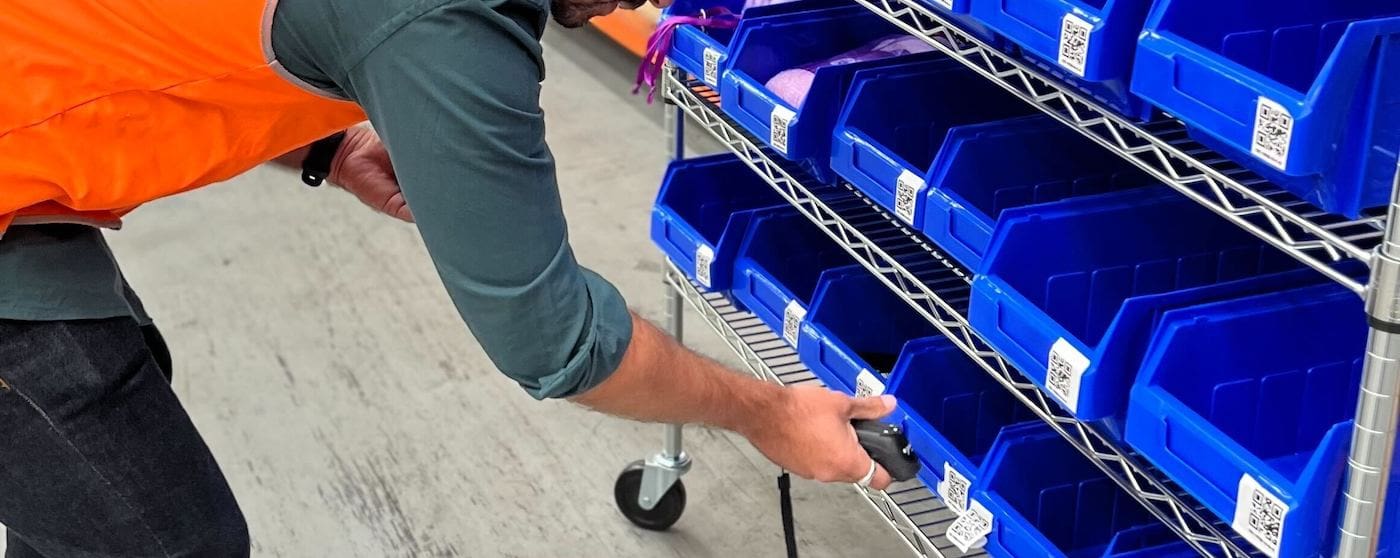How you manage your inventory is a key factor that determines the efficiency, accuracy, and overall performance of your ecommerce operations. It involves closely tracking your inventory levels to replenish your stock at the right time and maintain inventory accuracy. However, good inventory management also requires strategic inventory reduction instead of simply procuring more goods.
This post serves as a comprehensive guide on inventory reduction so you can understand what it is and why it’s needed. You’ll also learn some effective strategies on how to reduce inventory levels to save costs. Let’s get started.
What is inventory reduction?
Inventory reduction is the process of reducing inventory levels to align with consumer demand. This inventory management strategy involves getting rid of excess inventory to free up warehouse space and make room for more in-demand SKUs.
However, it isn’t just simply removing excess stock across the board. Inventory reduction may also involve preventing excess inventory in the first place and adjusting procurement strategies to focus on SKUs that are more likely to sell. That means slow-selling SKUs are reduced while top-selling SKUs are increased. This helps businesses to get more out of their procurement budget and increase their profits.
The purpose of inventory reduction
There are a number of benefits to reducing inventory. Let’s take a look at some of the main reasons why businesses would choose to reduce their inventory.
Maximising warehouse space
An obvious benefit to inventory reduction is the ability to free up valuable warehouse space to make room for more profitable products. When your warehouse is filled with inventory that you’re unable to sell, you’re wasting storage space. You can maximise your warehouse space by removing excess units of SKUs that are slow to sell and then making use of the free space to stock SKUs that sell well.
Reducing costs
Cost reduction is another key benefit of inventory reduction since you won’t be spending money to store items that you’re unable to sell. You won’t have to pay for storage fees, staffing, utilities, and other costs just to carry inventory that doesn’t get sold. Moreover, inventory reduction helps you avoid having your capital tied up in unsold inventory.
Increased profits
When costs are reduced, your profits simultaneously increase. Since you’re no longer wasting money on procuring and storing unnecessary inventory, your revenue would outweigh your spending. Plus, you can put your capital to good use for maximising profits. This would involve focusing on acquiring faster-selling SKUs, which allows you to increase your sales and grow your profits significantly.
Minimising waste
The more excess stock you have, the more likely you are to experience inventory waste. This may be in the form of inventory damage – whether it’s due to accidents, spillage, mold, corrosion, or water damage. Additionally, having large amounts of inventory sitting unsold in your warehouse means you’d eventually have to deal with expired inventory, particularly when it comes to perishables. All of this inventory waste can be prevented with strategic inventory reduction.
Improving cash flow
Since inventory reduction helps you avoid tied-up capital, you get to free up cash to spend on other important expenses. This may be anything from procuring more inventory to upgrading your facilities to ramping up your promotion efforts. Either way, having more cash flow makes it easier to manage and adapt your operational expenses according to your needs.
Increased flexibility
As a result of freeing up cash flow, you have an increased flexibility to adapt according to the latest market changes. You have the freedom to experiment with new ideas and trends, which means you can pivot your offerings and easily keep up with the competition. Additionally, you’ll find it easier to adapt to changes or disruptions in the supply chain.
Inventory reduction in action
Inventory reduction can be approached in a number of ways depending on the business and industry. So to get a better idea of how it works and how it could work for your own business, let’s look at a few hypothetical examples of inventory reduction in action.
Let’s say you run a supermarket and sell a wide variety of products. Some of your products are selling really well, whereas certain items are sitting unsold on the shelves for months at a time. So at the next inventory replenishment cycle, you decide to adjust your procurement strategy to order more of the fast-selling items and only order a few units of the slow-selling products. In some cases, you even decide to stop ordering more units entirely since you’re seeing almost no sales for those items.
For another example, let’s say you’re a butcher and you stock up on different cuts of beef in addition to other meats. This includes sirloin and ribeye as well as brisket and ground beef. However, people aren’t buying sirloin or ribeye as much, which leaves you with a lot of meat that’s at risk of expiring. So you decide to run a promotion and offer deep discounts to get rid of the excess inventory as quickly as possible.
Alternatively, let’s say you run a pharmacy that offers a variety of health and personal care products in addition to prescription medication. You always keep significant safety stock for the non-prescription items but notice that you regularly have too much inventory left by the end of the month. So you switch to a just-in-time inventory model where you restock your inventory only as needed instead of carrying safety stock.
The problem with excess inventory
There are a number of reasons why surplus inventory can be detrimental to your ecommerce business. Wasted warehouse space and growing storage costs are just the tip of the iceberg. Let’s break down some of the leading problems of having excess inventory.
Warehouse overwhelm
Excess inventory means your warehouse is stocked up on goods that might not even get sold. That’s valuable storage space that could have been used for storing products that are popular with your customers and are more likely to sell. This is particularly detrimental to businesses that have limited warehouse capacity as it means they’re unable to procure additional inventory to grow their revenue.
Moreover, storing too much inventory can easily overwhelm your warehouse. You may technically have the space, but it might get much more complex to manage all that inventory. You could be shelling out more resources and workforce to help you track and manage your excess inventory. Plus, it could easily throw your warehouse organisation into a loop, which could affect other operational activities.
Perishable products going to waste
When you have excess inventory stored in your warehouse, there’s an increased risk of certain products going to waste. This is particularly true for perishable products that are more susceptible to damage due to changing environmental factors. While some level of damage is expected, storing excess inventory puts you at an increased risk of experiencing abnormal spoilage due to factors such as changing temperatures and machinery failure.
Order fulfilment delays
Excess inventory can also seep into the order fulfilment aspect of your operations and result in delays. When there’s too much inventory in your warehouse, you may experience issues with organisation. This means workers are unable to move around as efficiently within your warehouse due to excess inventory blocking the way. It could also mean difficulty locating items because they’re not stored in their designated locations. Not to mention the risk of accidentally picking the wrong item and resulting in picking errors.
As a result, the picking and packing process can’t be completed as efficiently as possible. This can significantly delay the fulfilment process, which can cause delays further down the line. Combined with additional shipping delays, there could be a serious delay in order delivery.
Dissatisfied customers
Carrying excess inventory could result in customer dissatisfaction in a number of ways. First of all, the delays in fulfilment and order delivery mentioned above will negatively impact the customer experience. Since your customers aren’t getting their orders on time, it could lead to dissatisfaction that will leave a negative brand impression.
Additionally, since excess inventory affects warehouse organisation, it could result in picking errors that might not be corrected before fulfilment. This means that customers might end up with the incorrect items, which negatively affects their experience.
Most times, storing excess inventory means you’re unable to stock up on products that are in demand i.e., products that your customers actually want or need. Your customers are unable to find what they need because you don’t have them in stock, which is another cause for dissatisfaction.
5 inventory reduction and cost-saving strategies
Considering how excess inventory can have such as harmful impact, ecommerce businesses need to actively work on inventory reduction. Let’s take a look at some of the best strategies for inventory reduction and cost saving.
1. Forecast demand
Accurate demand forecasting is one of the best ways to reduce inventory. Being able to see exactly how much inventory you’ll need is necessary to avoid stocking up on too much (or too little) inventory. Based on predicted demand, you can plan your replenishment and safety stock as precisely as possible so as to avoid spending too much on your carrying costs. Alternatively, you can also reduce your safety stock if you don’t expect a surge in demand.
To make sure your demand forecasting is as accurate as possible, it’s important to go beyond historical sales data and look at other factors impacting demand. Are there any seasonal buying patterns that could affect demand? Have there been any changes in the competitive landscape? Are there upcoming trends that could influence the market? Looking at all these factors will allow you to make more accurate predictions about future demand.
2. Adopt the just-in-time (JIT) inventory model
If you’re constantly experiencing issues with excess inventory because of too much safety stock, switching to a just-in-time inventory model could effectively help you reduce costs. This essentially means ordering just enough stock to meet customer demand and quickly replenishing inventory as it runs out. As such, you can create a lean supply chain and minimise the risk of excess inventory.
When you often see sudden spikes in demand, it may make sense to keep plenty of safety stock to cater to your customers’ needs. However, it doesn’t always make sense to always keep extra inventory even when demand is much lower throughout the rest of the year.
Instead, it makes more sense to order less inventory more frequently. You’ll only be stocking just enough inventory to meet the usual demand and then replenish as needed. This can help you save thousands of dollars in inventory carrying costs. That said, it’s important to be strategic with this and place timely inventory reorders so you don’t accidentally run out of stock.
3. Conduct regular inventory audits
An inventory audit is often the first step that you need to complete so you can make strategic decisions about inventory reduction. This involves thoroughly examining your existing inventory to see what’s in stock, which SKUs are selling out fast, which items are slow to sell, whether you have excess units of a certain item, and so on. The audit process should also be able to tell you which items have high inventory holding costs and which ones typically have long lead times.
Based on this information, you should be able to strategically reduce your inventory by eliminating certain SKUs from your product assortment. Additionally, the audit process should also be able to tell you which items would need to be reduced through promotions, discounts, and bundling. So if you notice that certain items are coming close to their expiration date, you might want to offer deep discounts to get rid of them. Or if you’re spending too much on carrying costs for a certain SKU, you might want to bundle it with relevant and popular SKUs to reduce them more effectively.
As such, inventory audits should be performed on a regular basis as excess inventory can accumulate over time. You’ll need to periodically make decisions on inventory reductions based on your audit insights.
4. Leverage inventory turnover ratio and economic order quantity
Paying attention to relevant performance metrics can play a vital role in inventory reduction. Certain metrics can tell you which SKUs to reduce and how to order the right quantities. They can also give you an idea of how your inventory reduction efforts are paying off so you can make adjustments as needed.
Closely monitor your inventory turnover ratio as a whole and also for specific SKUs. This will tell you how often you sell and replace your inventory during a specific time period. As such, it provides valuable insights into your inventory performance, which can then be able to inform your decisions on inventory reduction. So you can decide whether to speed up the frequency of your purchase orders, decrease order quantity, discontinue slow-moving SKUs, and so on.
Additionally, you can also use metrics such as your economic order quantity to understand the ideal volume of inventory reorders. You can factor in your holding costs, annual demand, and order cost to understand how many units to reorder so as to avoid stockouts while keeping your storage and logistics costs low and maximising your warehouse space. This information can be used to make strategic decisions on reducing inventory.
In other words, these inventory metrics will help you understand how to reduce your order size based on which SKUs are taking longer to sell. Additionally, even for faster-selling SKUs, you’d be able to adjust your order size by balancing it with the frequency of your reorders to keep up with consumer demand.
5. Software and automation
Technological advancements have made it easier for ecommerce businesses to streamline their inventory reduction process using the right tools and automation solutions. First of all, inventory management software can centralise all the information related to inventory to improve visibility and accuracy. You can quickly gain access to information about your current stock levels and inventory value as well as keep track of inventory movement in real-time.
Inventory management software gives you accurate information about your incoming inventory as well as outgoing stock. All of this accurate, real-time inventory data gives you a clear picture of your inventory needs so you can make informed decisions about procurement. For example, even if stock if running low, you won’t necessarily need to create another purchase order if you see there’s more inventory coming in soon.
In addition to this, inventory automation can help you optimise your reduction process to a significant extent. If you decide to adopt the just-in-time model, for example, you can set reorder points and get notified when inventory levels drop below a certain number. That way, you won’t accidentally forget to replenish your stock and can make do with smaller reorder quantities.
Some automation tools will even let you automate the process of generating purchase orders. That way, you can automatically reorder inventory at set intervals or after stock dips below a certain level. This gives you the freedom to function with smaller (but more frequent) inventory purchases, which allows you to cut down on storage costs.
So the right software solutions can significantly optimise inventory reduction with increased accuracy, real-time visibility, and improved automation. This is where you can turn to comprehensive inventory management software that comes with real-time inventory tracking and automation features to help you manage your inventory reduction efforts.
Don’t just reduce inventory – take complete control with ShipBob’s inventory management solution
From what you can see so far, it’s clear that a simple inventory reduction isn’t the solution. Instead, you need to take complete control of your inventory and strategically plan your procurement efforts to reduce excess inventory and minimise cost. That’s exactly where ShipBob’s inventory management solution comes in, providing you with real-time visibility and powerful features to effectively optimise your inventory.
Diversify with inventory distribution
Relying on inventory reduction alone can result in stockouts, which are just as problematic and expensive as excess inventory. As such, ecommerce businesses need to focus on inventory optimisation to ensure that they’re maintaining the right inventory level to meet consumer demand without the risk of stockouts. This is why it’s so important to strategically distribute your inventory between different fulfilment centres so you can diversify your stock.
ShipBob’s software provides data-backed recommendations on how to distribute your inventory between different fulfilment centres. Not only will this allow you to store your inventory closer to your customers, but it will also help you to distribute your inventory strategically according to regional demand. Moreover, distributed inventory is the key to maintaining a solid backup plan in case you experience unexpected stockouts or abnormal spoilage in one fulfilment centre.
Count inventory in real-time
ShipBob offers real-time inventory management features that allow you to track your inventory levels and movement in real time. This means you can accurately count how much inventory you have at different stages of the supply chain. You’ll be able to tell how many units are in transit from the supplier, how many units are currently in stock, and how many units are on the way out to your customers.
This level of accuracy can help you make informed decisions about procurement, so you don’t accidentally order too much to make up for your low inventory levels. It also allows for multi-echelon inventory optimisation, which means you can maintain optimal inventory levels across every stage of the supply chain.
Automate inventory reorder points
One of the biggest challenges of adopting inventory reduction methods such as the just-in-time model is the need to precisely time your inventory reorders. You’ll need to make sure that you’re reordering just the right amount of inventory at exactly the right time so as to avoid stockouts.
With ShipBob’s inventory management solution, you can streamline your replenishment strategy with inventory reorder point notifications. The software lets you set up reorder points so you automatically get notified when you’re running low on inventory. This ensures that you always remember to reorder inventory on time. Plus, you can accurately account for factors such as lead times to make sure that you’re replenishing inventory before you completely run out of stock.
By automating your inventory reorder points, you can better adopt the just-in-time inventory model. So you can always replenish just in time without overspending on inventory carrying costs.
Get started with ShipBob
Interested in leveraging ShipBob to improve inventory management? Connect with our team to get started.
Inventory reduction FAQs
Below are answers to the most common questions about inventory reduction.
How can technology aid in inventory reduction?
Technology can be used to track inventory performance and make accurate predictions about demand, which can be used for optimised procurement planning. It can also provide real-time inventory levels and inventory movement, which can inform your inventory replenishment. Moreover, technology can help you automate your inventory reorders to ensure timely replenishments and prevent stockouts.
What strategies can businesses use to reduce inventory and cut costs?
Businesses can reduce their inventory and minimise holding costs by offering promotions and discounts. SKU rationalization is also an important step to reduce inventory as it informs you of the SKUs that need to be discontinued due to a lack of sales and a decline in profitability.
What role does a third-party logistics provider play in inventory reduction?
A third-party logistics (3PL) provider like ShipBob can help with inventory reduction by letting you distribute your inventory strategically between different fulfilment centres. That way, you can reduce risk and maintain backup stock at various locations instead of stockpiling them in one place. ShipBob’s inventory management software lets you track real-time inventory levels throughout the supply chain, so you know what to reorder and when.
Its powerful analytics tool shows you SKU-level inventory performance to help you identify top-performing SKUs and slow-selling items, which can inform your SKU rationalization efforts. Moreover, it shows you your inventory holding costs to help you understand when you’re spending too much on carrying excess inventory. You can even set up automatic reorder point notifications, so you always remember to replenish your stock before you run too low on inventory.



